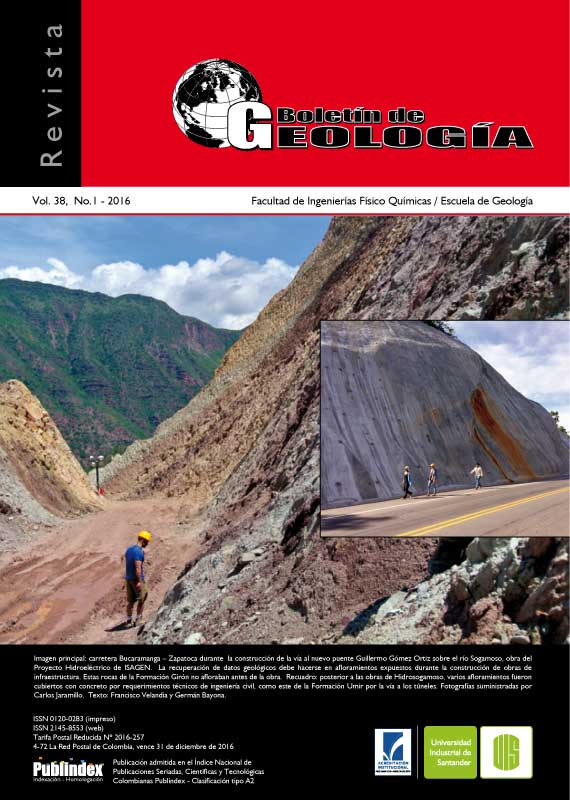PROVENANCE IN THE SOUTHERN EXTREME OF THE MIDDLE MAGDALENA VALLEY DURING THE CENOZOIC: MEASUREMENTS BASED ON THE PALEOCURRENTS QUANTITATIVE ANALYSIS
Published 2015-12-07
Keywords
- Flow directions,
- Paleogene,
- Neogene,
- Central Cordillera,
- Eastern Cordillera
How to Cite
Altmetrics
Abstract
The paleocurrents studies in the cenozoic succession of southern area of the Middle Magdalena Valley Basin (MVB), have had integrate two measurement methodologies, one in surface and the other one in the subsurface, using dipmeter logs. From those results a paleocurrents model for the sequence between the Upper Eocene – Lower Pliocene (formations Esmeraldas, Mugrosa and Colorado, Real Group, and Mesa Formation) was obtained. The results showed as the main supply source to the basin, the ancestral Central Cordillera for the sedimentary sequence, with the exception of two epochs: Lower Miocene (Colorado Formation) and Upper Miocene (Upper Real), where the supply source changes from the ancestral Central Cordillera to the Eastern Cordillera. In the sense of the paleoflows these variations are probably associated with the first pulses of the Eastern Cordillera rise during the Early and Late Miocene. However the abundance of igneous and metamorphic materials indicates that the Central Cordillera keeps its activity, providing material to the formations deposited during those periods.
